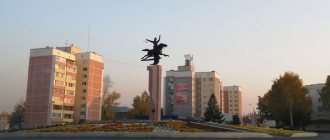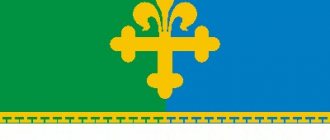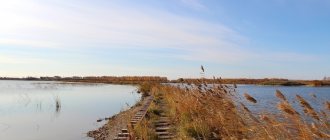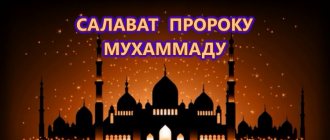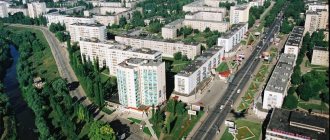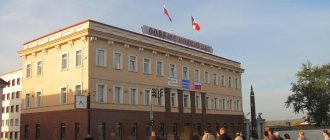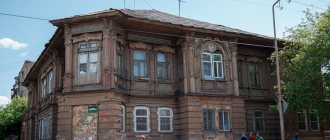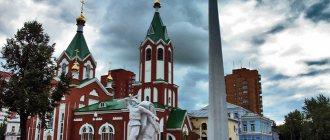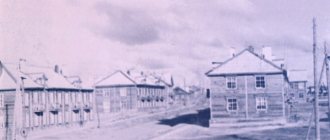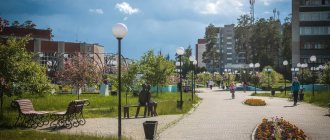Characteristics of the city of Salavat Republic of Bashkortostan
Salavat (Republic of Bashkortostan) is an industrial city on the map of Russia with a population of approximately 165 thousand people. The largest and only chemical enterprise in the country, the Salavat Chemical Plant, is located here, producing heptyl rocket fuel.
In terms of area, the city ranks 3rd among the settlements of Bashkortostan and second in terms of production volume.
Important dates in the history of Salavat
The name of the city was given in honor of the national hero Salavat Yulaev, whose cavalry, according to the historical monument, passed through the area of modern Salavat at the beginning of the Peasant War in the fall of 1773.
The reasons for the formation of a new city - Salavat - on the map of Russia are the discovery of oil fields in the neighboring city of Ishimbay, the need for the production of fuel and refined oil products, and its close location to the Belaya River.
- 1947 - relocation of the Montenegrin petrochemical plant No. 18 to Salavat for fuel production (modern name Gazprom neftekhim Salavat).
- June 30, 1948 – founding of the village of Salavat (New buildings).
- 1952 – opening of the first vocational school.
- June 12, 1954 - the village of Salavat was given the status of a city.
- 1956 – construction of the railway station.
- 1962 – start of construction of the Salavatsteklo enterprise.
- 1966 – construction of Novo-Salavatskaya CHPP.
- 70s - construction of cinemas and the Sports Palace.
- 80s - construction of cultural centers, a water supply network providing the city with drinking water from underground sources.
- The 90s - the beginning of the construction of a number of religious institutions: churches and the Salavat Cathedral Mosque.
Salavat
Background
An inscription on a stone near Victory Square in Salavat says that during the Peasant War (1773–1775), the cavalry of the national Bashkir hero Salavat Yulaev passed in the area of the future city. The cavalry was supposed to unite with the troops of Emelyan Pugachev.
On the site of the modern city there once stood small Bashkir villages: Artel Kuch, Karlykul, Kudakai and others. In the mid-40s of the twentieth century, the directorate of plant No. 18 was located in the city of Chernogorsk (located in Khakassia). Soon a decision was made to move the plant to Bashkiria. Here the hydrogenation of petroleum products was to be carried out, from which it was subsequently planned to obtain diesel fuel and gasoline. The site for the construction of the enterprise was approved in 1948. The enterprise was to be built in the area of the village of Big Allaguwat. It was planned to build a workers' village for 25 thousand inhabitants near the village of Musino.
Base
Salavat was founded on June 30, 1948 as a settlement called Novostroika. Future workers of petrochemical plant No. 18 (current name OJSC Gazprom neftekhim Salavat) were supposed to live in this village. Professional builders, as well as prisoners of war and prisoners, were sent to build the plant. In total, more than 25 thousand people came to the construction.
It is believed that the beginning of Salavat was laid by the city of Ishimbay, which was called the “second Baku”. Ishimbay provided considerable assistance in the construction of Salavat and the petrochemical enterprise. The first builders of Salavat often lived in the houses of Ishimbay residents. The village council of the new settlement was subordinate to the Ishimbay city council. The village of Salavat remained part of Ishimbay until 1954.
Despite the hospitality of the Ishimbay people, most of the first builders of Salavat were forced to live in tents. Then they moved to barracks on Stroiteley Street. Products were brought from Meleuz and Ishimbay. The future city was built in blocks. There was one bomb shelter for every four blocks in case of nuclear war. Each block implied the presence of socially significant facilities: shops, gyms, schools, kindergartens, etc. The main developer was the Salavatstroy trust.
At the end of the 40s, a bakery, a woodworking plant and a brick factory were built in Salavat, the tasks of which were to provide construction materials for the objects under construction. In the same years, construction of a hydrogenation plant and a gas plant began. RMZ (today – OJSC Salavatneftemash), thermal power plant, MCC, TSC, catalyst factory and many other auxiliary enterprises were built. Salavat's first school was located on Stroiteley Street in barracks No. 19. Later the school moved to a building located on B. Khmelnitsky Street. The petrochemical plant needed specialists. For their training, vocational school No. 1 was opened at the plant. In 1950, the first cafe, called “Blue Danube,” appeared in Salavat.
City status
On June 12, 1954, the village of Salavat received city status and its modern name. It is not difficult to guess that the name was given to it in honor of the national Bashkir hero. The construction of two-story brick houses began in the city, which progressed at such a fast pace that already in the mid-50s, 50 thousand people lived in Salavat. The city had everything necessary for a full life for its citizens: shops, kindergartens, hospitals, cinemas, schools, one of which was even intended for in-depth study of the English language. In 1956, a railway station was opened in the city. The railway line was built from Salavat to Tyulgan station. Later it was extended to Orenburg. Until now, the railway remains unelectrified and single-track. 1956 was also the year of the opening of the Salavat State Bashkir Drama Theater in the city.
Some buildings from the 40s and 50s have not survived to this day. This applies to barracks on Stroiteley, Severnaya and Pervomaiskaya streets. Prisoners of war and prisoners who participated in the construction of the city lived there. After the death of I. Stalin, all these people were sent home. The barracks were liquidated in the 70s. In their place, modern brick residential buildings were erected. Until the 90s, the construction of all Salavat buildings was carried out by the Salavatstroy trust.
Salavat in the 50-80s
At the end of the 50s, Salavat became the All-Union Komsomol shock construction site. Young people from all over the Soviet Union come to build a new city. In the 60s, the Salavat Komsomol was awarded the Order of the Red Banner of Labor. In 1955, a medical college opened in the city. In 1957, the Salavat Industrial College (today a college) was built in the city. Salavatnefteorgsintez becomes the city-forming enterprise of Salavat. The enterprise was constantly expanding, new facilities were put into operation. The main products were kerosene, gasoline and ethylene propylene. Salavat's main mode of transport was the tram, which took the company's employees to work. Over time, a tram line was built from the glass factory to the petrochemical plant.
The construction of a network of country health centers began back in the 50s. Numerous tourist centers, holiday homes, and pioneer camps were built not far from Salavat. Already in our time, the Children's health (formerly Pioneer) camp “Sputnik” received the title of the best corporate camp in the Russian Federation in 2005.
In the early 60s, residents of Salavat were given 6-acre plots of land for vegetable gardens. The vegetable gardens were located along the Belaya River. There were strict regulations for the construction of houses on these sites. At the same time, gasification was carried out in the city, and the Salavat Music College was built. In 1962, the Salavat technical glass plant was built in the city, which produced spatula fiberglass in rolls. In 1964, the Neftekhimik Palace of Culture was built in the city. In 1966, the construction of the Novo-Salavatskaya CHPP was completed. In the 60s, five-story brick houses (“Khrushchevka”) began to be built in the city. The first nine-story buildings appeared in Salavat in 1967. The Salavat glass factory continued to grow. New buildings are regularly commissioned. A special regime correctional colony for 1,200 people appeared in the city.
A pedestrian bridge was built across the Belaya River. Residents of the city have long used the left bank of the river as a vacation spot. However, due to the lack of a bridge across Belaya, it was necessary to ford. After the extraction of gravel for construction, deep quarries remained behind the river, which over time turned into lakes. In Salavat itself, a stadium named after the 50th anniversary of the October Revolution and a Park of Culture and Leisure appear. At the end of the 60s, the city was visited by the then famous hypnotist V. Messing.
In 1971, the Salavat Petrochemical Plant was awarded the Order of Lenin for the early implementation of the eighth five-year plan, the tasks of which included the development and creation of large-scale production. A considerable number of enterprises required a reservoir for storing production waste. In 1973, a nuclear explosion occurred in the vicinity of the city, after which an underground reservoir of the required size appeared. In the mid-70s, the Sports Palace, an obelisk on Victory Square, the Oktyabr cinema and a new bus station were built at the Neftekhimik stadium. In addition to four cinemas for adults, a children’s cinema “Orlyonok” was also built in Salavat on Ostrovsky Street. The Pioneer cinema, located on Pushkin Street, was demolished. A funeral home was built in its place. In addition to the barracks in which the first builders of the city lived, in the 70s the brick factory village, the villages of GATK-1 and GATK-2 were demolished.
The Stroitel and Almaz cultural centers were built in the city. Television broadcasting appeared on two channels. The Salavat optical-mechanical plant begins producing binoculars for various needs, including night vision models. The plant took part in the construction of a binoculars production plant in Zagorsk. With the onset of the food crisis in the city, food cards for cigarettes and vodka were introduced. The presence of vegetable gardens becomes a salvation from hunger for many residents of Salavat.
In the 80s, a network of water pipelines was built in the city, which was supposed to provide drinking water to the residents of Salavat. Water was supposed to be taken from sources near the village of Zirgan. Experts claimed that the water in these sources is so pure that it does not need disinfection. According to research results, the water that Salavat residents drink turned out to be mineral and can be used for medicinal purposes.
Shortly before the start of perestroika, the Zhelanny microdistrict and the southernmost street of Salavat, Leningradskaya, were built. One of the first periodicals in the city, the newspaper “Leninsky Put”, began to be called “Choice”. The publication of the newspaper “Unysh” was also launched, intended for free advertisements. The privatization of housing has begun in the city. The opportunity to buy and sell housing leads to the emergence of a real estate market in Salavat. Most of the city's enterprises were corporatized.
Current stage of development
After the severe economic crisis of the early 90s, a gradual revival of spiritual life began in Salavat. Despite economic difficulties, city residents are paying more and more attention to the construction of objects of religious significance in their city. From 1994 to 2002, the Church of the Holy Blessed Prince Dmitry Donskoy was built in Salavat. It took several more years to build the church's outbuildings. The Baptist Church was completed in 2000. From 1992 to 2004, construction of the Salavat Cathedral Mosque took place.
Residents of the city, as once in the 60s, were given free plots of land from four to six acres near the Sukhailya River (behind the 116th quarter). The building of the Komsomolets cinema today houses the city registry office. Previously, the registry office was located on Lenin Street. On Gorky Street, wooden houses were demolished, the residents of which were given housing in new modern buildings. In most houses on the central streets of the city, the first floors were converted into shops. An ice stadium with artificial turf was built in the city.
In 2000, the regulations on the coat of arms of the city of Salavat were approved. The authors of the coat of arms were Rivinir Timershaehovich Faezov and Alexander Viktorovich Lavrukhin. The monument to Salavat Yulaev, located on Stroiteley Street, was moved to Yulaev Street, where the monument was installed on a higher pedestal. In place of the monument to the national Bashkir hero, a monument to Pushkin was erected. The new memorial complex “Land of Yurmaty” was opened in 2003. The complex was built on the site of villages that fell into the area of the petrochemical plant and were subsequently demolished.
In 2008, Russia again experienced a financial crisis. Demand for the products of Salavat enterprises is sharply declining. This leads to lower wages and increased unemployment in the city. The workers of OJSC Salavatnefteorgsintez suffered the most. The development of the city continued after the end of the crisis. Fifteen kilometers from Salavat, a ski slope with recreation buildings and lifts was built. In the village of Musino, the Intercession-Ennatsky monastery was built. In 2009, the city opened the Salavat Museum of Local Lore, located in the building of the former Rodina cinema.
Modern Salavat is the third largest city in the Republic of Bashkortostan. The city continues to grow: housing construction is underway in the southern part of Salavat. However, the population growth of Salavat stopped in the 2000s. This is explained by the demographic crisis in the country, as well as the outflow of the population to other regions of the Russian Federation.
In 2010, the Sports Palace at the Neftekhimik stadium was demolished. A multifunctional sports complex was built in its place. The Eternal Flame memorial complex was reconstructed on Yulaev Street. The complex included a memorial pylon in honor of the Salavat soldiers who died during the fighting in Chechnya, Afghanistan and other hot spots. One of the city-forming enterprises still remains OJSC Salavatnefteorgsintez. The enterprise was renamed OJSC Gazprom neftekhim Salavat. This is one of the first enterprises in the republic that managed to overcome the consequences of the 2008 economic crisis in 2011.
There is a program for relocation from dilapidated housing in Salavat. Some residents of the city, whose housing was considered dilapidated, have already been moved to new apartments. At one time, houses on Pervomaiskaya, B. Khmelnitsky, Gorky, Rechnaya and Stroiteley streets were declared unsuitable for living. In 2012, the city opened to the public the Culture and Recreation Park, which had been under reconstruction for a long time.
Salavat on the map of Russia: geography, nature and climate
The city is located 160 km south of the capital of the republic - Ufa.
On the map of Russia you can see that on the left side Salavat is surrounded by a large river artery of Bashkortostan - the Belaya (Agidel) River. Another water body located directly within the city is Lake Kurbalykul.
In the late Paleozoic era, there was a sea basin on the territory of modern Salavat. This is evidenced by sedimentary rock deposits in the form of gypsum, sandstone, clay, and limestone. 50 km from Salavat there are unique natural monuments - the shikhans of Toratau, Kushtau, Shakhtau and Yuraktau, the formation of which also dates back to the period of the existence of the sea.
Oil deposits have been found in the vicinity of the city. Before the discovery of oil fields, the territory of Salavat was a steppe.
The climate of the area is moderate continental with a high level of humidity - warm summers and long, snowy winters. The average temperature in July is 19.4 °C, in January -13.9 °C. The maximum temperature in July was recorded in 2011 and was +39.3 °C. The maximum temperature of the cold period fluctuates at −48.2 °C. An average of 576 mm of precipitation falls annually in Salavat. The wind is mainly westerly. Frequent fogs are associated with the city's low-lying location.
Climate and ecology of Salavat
The climate in Salavat is no different from other cities in central Russia. Winter here is snowy, long, often with severe frosts. Due to the fact that the city is located in a lowland, fog is common in winter. In addition, very often these fogs arise due to fumes at the Petrochemical Plant. The average temperature in winter is somewhere around minus 18-20 degrees. Sometimes, of course, it reaches minus 35 degrees. And in spring it is warm and sunny in Salavat.
The Belaya River floods widely at the end of April. Since the city is located in close proximity to the river, earlier, back in the fifties, part of the city was flooded. This problem was solved by cementing the left bank of the river. In summer there are truly hot days. July and mid-August are especially different in this regard. It happens that the summer sun begins to melt the asphalt. And besides, the degrees are increased by the factories puffing away at a distance. Salavat residents find salvation on the shady banks of the Belaya. Although the river is considered polluted, saturated with wastewater from the Gazprom Neftekhim Salavat OJSC enterprise, no one thinks that you can’t swim here. Salavat residents seem to have long ago developed immunity from all possible diseases associated with dangerous work in the city’s industries. Nothing really scares them; they are optimists. And they know how to rejoice in their successes. Among their own people, jokes and anecdotes are written related to the unfavorable ecology of the area.
Beach in Salavat
Jokes aside, but the bitter truth is better than a sweet lie. There is no need to explain that oil production brings more than just benefits to the city. Due to the close location of the industrial zone to the residential area (and besides, it is located higher than the city in relief), the smoke from factory chimneys flies directly into the city, polluting the air we breathe. There has always been an environmental danger, but in Soviet times people skillfully turned a blind eye to it. It was impossible to say that the city was hazardous to health. Who will work then? And the word “ecology” was not known then. The city was as if shrouded in a white cloud, because they were not only engaged in oil production. Salavat enterprises produced rocket fuel and carried out underground nuclear explosions. Yes, they did everything they could to boost the industry of their homeland. As a result, emissions of pollutants into the atmosphere amounted to about 81 thousand tons. In terms of one person it turned out to be 515 kg. These shocking figures had a sobering effect.
View of the industrial area
In order to somehow change the environmental situation, the city government has developed a whole program to control waste emissions from enterprises and plant greenery on the streets. Since huge areas of forest were destroyed during the construction of the city, there is almost no greenery left in the city. There was only one thing left: to increase the amount of green space. Tens of thousands of trees and various shrubs were planted in the shortest possible time. They were designed to carry out not only aesthetic, but also environmental functions. In addition, the main enterprise of the city allocates huge amounts of money from its budget to combat the poisons emitted into the atmosphere. Entire programs are being created to clean waste tanks, control chemical emissions, and modernize their industrial facilities. And yet people live in Salavat, they don’t go anywhere, they’re used to it. And by the way, never in its entire, albeit short, history has Salavat been included in the black list of the most polluted cities. This means that there is still hope that someday the air here will become, although not completely, still clean.
Routes on the map of Salavat. Transport infrastructure
The detailed map of Salavat with streets and houses also shows important transport networks: buses, trams, railways.
Bus service is provided by the Salavat bus station (Ufimskaya, 33). There are suburban, city and intercity bus routes. The federal highway R-240 Ufa-Orenburg .
through the Salavat railway station (Vokzalnaya, 2A) of the Kuibyshev Railway; commuter trains to Sterlitamak, Kumertau.
Public transport includes buses and trams. Tram lines are located in the western part of Salavat, on which 55 trams run daily.
The section of the Belaya River near the city of Salavat is shallow, which does not provide opportunities for the development of water transport.
Crime
Oddly enough, Salavat is one of the most criminal cities in Bashkiria! Residents of Sterlitamak, Ishimbay, Ufa, etc. are afraid to contact Salavat residents. Such a bright, sweet and seemingly harmless provincial town has a downside to the coin. And it’s not known where all this “banditry” comes from - either it’s in the roots (the first residents - the builders of the city, almost all were prisoners), or they love their town so much that they don’t want to let uninvited guests into their world. However, the fact remains that there is crime, although not on such a scale as, for example, in Chicago. No, no one is killed here every day. So, they wave their fists and disperse.
Rumor has it that in the dashing nineties, Salavat ranked third in crime in Russia. Shots were fired in the streets, residents were even afraid to go to the store. Previously, each district had its own group. These groups differed in name, their content was the same - they were all gopniks. Usmanovsky, Sadovsky, Orionovsky, Dzhiforsovsky, dvadtsadka, Pokrovsky, Ilizarovsky, Dygalovsky, dark, bamboo, Baybakovsky, Borodovsky, Lisovsky - as soon as they called themselves. Now, however, they have all sunk into oblivion. They commit crimes quietly.
In the evenings, young people wander around in gangs, looking for those who will provoke a conflict. Well, they like to work with languages here, to take them “at their word” or “to show off.” And, by the way, the whole company is also responsible for their words. The principle “one for all and all for one” applies here. They'll beat you in the face for your own sake and leave you without teeth, or even without a wallet. Showdowns often occur at night discos, when companies from other cities come to hang out. When there are no strangers, battles take place among our own, or rather between regions. Who is better and who is worse is revealed in brutal fights. This is especially true for informals, of whom there are also plenty here, by the way. They also go in groups of several people - this way they have a chance to fight off the local criminals.
In general, there is never a dull moment here. When going out into the street, and even more so outside your neighborhood, you need to be prepared for anything. But despite this, many people like their hometown and don’t know how they would live without all these showdowns and fights. Well, they don’t like silence and splendor in Salavat. They should make some noise.
Sights of the city of Salavat
On the map of Salavat, along with houses and streets, there are places that symbolize this city and tell about its history.
Museums
- Salavat Museum of History and Local Lore
The museum was created in 2009. The museum exhibits represent the main milestones in the history of Salavat. Excursions and thematic events are held, films and cartoons are shown.
Address: Pervomaiskaya, 18
- Art Museum
Mostly works by local artists are presented here. They can be purchased to add to your art collection. Art and photo exhibitions are held.
Address: Pervomaiskaya, 3
Theaters and palaces of culture
- Salavat State Bashkir Drama Theater
The theater's repertoire includes performances in the Bashkir language with simultaneous translation into Russian, as well as children's productions based on famous works.
Address: 30 years of Victory, 5.
- Palace of Culture "Neftekhimik"
The building is listed as an architectural monument. The program of events includes performances by creative groups, folk ensembles, clubs, including a KVN team. The museum of the Gazprom neftekhim Salavat enterprise is located in the palace building.
Address: Lenin Square.
Temples and cathedrals
- Salavat Cathedral Mosque
Built in the 90s, the cathedral mosque impresses with its size and elegant architecture. The New Year according to the Muslim lunar calendar opens with a competition to identify the best reciters of the Koran and experts in Islamic traditions.
Address: Gubkina, 5
- Holy Assumption Cathedral
Daily services are held. There is a Sunday school. The architecture of the building will not leave connoisseurs of beauty indifferent.
Address: Ufimskaya, 35.
Monuments
- Stele to Salavat Yulaev
A rider on a flying horse meets and sees off the guests of Salavat. The obelisk was erected in honor of the national hero, whose name the city is named.
Address: entrance from the northern part.
- Bust of Alexander Matrosov
The monument was erected on the boulevard, also named after the hero, on an area landscaped for recreation for citizens.
Address: Matrosova Boulevard.
- Tank T-34
A real tank of the 1941 model is installed in the memorial complex near the Eternal Flame.
Address: Salavat Yulaev Boulevard
Interesting places on the map of Salavat
- Central Park of Culture and Leisure
The park has children's playgrounds, a fitness center, bicycle paths, and a landscaped pond.
Address: st. Key.
- Embankment of the Belaya River
A favorite place for townspeople in the summer. Fans of extreme sports can organize river rafting.
Industrial facilities
Our city of Salavat is one of the industrial centers. Large production facilities are located here. Many business travelers and city guests come to visit them.
Gazprom neftekhim Salavat
Large oil refining chemical production. It is a city-forming enterprise. You can learn about its history in the Neftekhimik Palace of Culture. Thanks to this enterprise, the city was founded. It is constantly growing and organizing new workshops and factories, offering new jobs. There is a panel on the control wall that has a symbolic meaning - the unification of nations and professions.
Administrative building of the enterprise.
Salavatneftemash
A large engineering production facility that produces equipment for the chemical, petrochemical and oil and gas industries. They also produce various parts and repair equipment, produce metal structures, etc.
Central entrance of Salavatneftemash.
Salavatneftemash management.
Salavatglass
The company produces technical glass. The main product is sheet glass. It is used as double-glazed windows, automobile glass, glass containers, etc. Near the main entrance there is a fountain and a seating area.
Central entrance Salavatsteklo.
Our city is small and you can walk through it in 1 day. But everyone can find something interesting for themselves. At the same time, the city is constantly developing and transforming, becoming more beautiful and unique.
Lyana Rudakova
Territorial structure of Salavat
The local population is accustomed to dividing the city into new and old. On the map of Salavat with streets and houses, the northern part is the Old Town. The new city begins with the prestigious microdistrict Zhelanny.
The city center is Lenin Square with the administration building. Territorial units - blocks and microdistricts (51st quarter, 48th quarter, 7th microdistrict, Mars microdistrict, etc.)
In the northern part of the city there are old buildings. The central district has Lenin Square, where the administrative building is located.
The eastern part of the city is considered a comfortable area.
The main street of the city, Lenin, stretches from the square.
All important city streets start from the central area. All cultural attractions of the city are located on Dzerzhinsky, Gagarin and Pervomaiskaya streets.
Districts and real estate of Salavat
The third largest city of the Republic of Salavat is located on the left bank of the Belaya River, 180 km from the capital of Bashkiria, Ufa. Salavat is a small town. If you count its area together with the industrial zone, you get only 102 square kilometers. Since Salavat was first built up as a workers’ settlement, they decided not to get carried away with the original layout of the streets and the special architecture of the buildings. They took as a basis a parallel system of highways, which were designed to divide the settlement into small blocks, 200 * 200 meters in size, and to minimize unnecessary confusion in the streets.
So people began to live in small communities inside these same neighborhoods (today, by the way, nothing has changed), creating their own little world inside each quarter. There was one friendly family. With its own holidays, traditions, groups. They didn’t like strangers, and they still don’t like them. The city is considered criminal, despite the fact that almost all residents know each other. Visiting guests are also not particularly revered, so on the streets of little Chicago, as the residents of Salavat affectionately call their town, a passing traveler had better be careful.
Bird's eye view of the city
Later, when the village suddenly became a city, the habit of building houses and streets in clear parallel lines was abandoned. Subsequently, it turned out that such a simple form of city development, without much imagination, is very convenient for both residents and guests, who will not only find the house they need without any problems, but will also walk around the entire city in a matter of minutes.
The northern side of Salavat is old. The same barracks from which the story began still stand here. These are the ones you can see when entering the city. And, unfortunately, they create a first, not very good impression of him. It seems that time stopped back in the seventies. True, dilapidated, unsightly buildings are gradually being removed, and more decent houses are being built in their places. The low-rise, two-story buildings in the northern region are gradually being replaced by taller buildings. It's not so sad here anymore. You can even smell modernity and the movement of time.
Old part of the city
Like any city, Salavat has its own center - the square named after. V.I. Lenin, on which the administration building is located. The main, widest and most beautiful Lenin Street adjoins this square. Gradually, as a result of construction, quiet and calm streets, built up with typical gray Khrushchev five-story buildings, grew in different directions from this street. Since then, nothing has changed, except that occasionally you can see a decent-looking nine-story building, and low-rise modern buildings with a special Bashkir orientation. Until the end of the fifties, the city was built mainly with two- and three-story houses. In order to somehow diversify the architectural appearance of large administrative buildings, they were placed in such a way that they were clearly visible from any distance.
Square. Administration building
By the way, almost all more or less main roads of the city converge at the central place - Pervomaiskaya, Gagarin, Dzerzhinsky and Neftyanikov Avenue. All of them, ending at the same point, create a certain architectural ensemble of buildings that house almost all the cultural and educational institutions of the city.
Stalinka buildings in the city center
Pervomaiskaya Street is considered beautiful and especially popular among residents of all ages. Grandmothers, remembering their youth, often call it “Salavatsky Broadway”. Even now you can hear such a phrase, fortunately couples in love or mothers with strollers give “Broadway” their preference in evening walks. From Lenin Square to the Rodina cinema, it is especially good to walk along an alley surrounded by greenery with numerous benches.
Pervomaiskaya Street
The eastern part of the city is considered the most favorable for living. There are all the necessary cultural and educational institutions, recreation parks, sports grounds, and kindergartens. Therefore, housing here is in great demand than in the old neighborhoods of the city. The cost of one square meter in some places reaches 35 thousand rubles. And on average in the city, a meter of living space is sold for 25-28 thousand. This is a quite acceptable amount by city standards.
There, in the east, the construction of the prestigious urban-type settlement “Zhelannaye” is in full swing. It’s not for nothing that the village bears such a name – almost half of Salavat residents want to live here. And who wouldn’t want to be the owner of a huge, comfortable cottage with an attic and all the necessary amenities for a comfortable existence. The mere fact that the customer for the construction is JSC Salavatnefteorgsintez, the largest oil production company, suggests that the village under construction will soon become the most expensive and desirable not only for residents of Salavat, but also other nearby cities. Already, the cost of a small cottage is approximately five million rubles. You can only get from the center to the village by private transport, since the public route has not yet been approved.
Houses in the village of Zhelanny
If you want to visit Salavat, be sure to stay at a modern and ultra-comfortable hotel, which is located among the picturesque area of “Zhelanny”. The cost of a room per night is quite reasonable, however, in high seasons the prices begin to bite a little.
Hotel in Zhelanny
Main streets of Salavat
The main streets of the city include the following:
- One of the beautiful streets is Pervomaiskaya . The walking alley stretches from the central square to the Rodina cinema.
- In the south of the city there is Salavat Yulaev Boulevard . Houses appeared on the street in the 80s. A map of Salavat by district will allow you to find the desired object in any part of the city. On the street there are clinics, a shopping center, and many different shops. This boulevard intersects with Ostrovsky and Lenin streets.
- In the new part of the city there is Oktyabrskaya Street . Along it there are mainly five and nine-story buildings. The street passes through the central region of the city, it intersects Klyuchevaya and Ostrovsky streets.
- The main and oldest street is considered to be Lenin . It houses a food market, a cinema and a large swimming pool.
- Industrialnaya Street runs through the entire city . It houses numerous offices and industrial buildings.
- Between the village of Musino and the dacha plots there is Zheleznodorozhnaya Street . A railroad runs through it. The railway artery leads to a woodworking plant.
- In the city center you can find Neftyanikov Avenue . It extends from the central square to Oktyabrskaya Street.
Participation of Salavat residents in local conflicts
Afghan war 1979-1989
.
left its painful mark on the people of Salavat. In Afghanistan, 6 residents of Salavat died, all of them were posthumously awarded the Order of the Red Star. Here are their names: Vladimir Egorovich Melnikov
. Born in 1958. He graduated from 8 classes of secondary school No. 13, then SPTU No. 27 (PL No. 20). Since October 1979 - in Afghanistan. Died on August 23, 1980.
Victor Vasilievich Karpov
. Born October 2, 1960. Until the eighth grade he studied at secondary school No. 2, then graduated from vocational school No. 36. In Afghanistan since 1980. On August 3, 1981, a group of paratroopers ran into an ambush. Sergeant Karpov and Private Zuev remained to cover the group. Several dushmans were destroyed by machine gun fire. A thrown grenade seriously wounded Victor. After the main forces arrived, he was sent by helicopter to the hospital. He lost a lot of blood and died in the arms of his comrades on August 3, 1981.
Alexander Petrovich Bochkarev
.
Born January 16, 1963. He graduated from 8 classes at secondary school No. 7. Then vocational school No. 19 as an electrician. He died on September 3, 1982 in the Panjshir gorge, covering an enemy machine gun with his body. He repeated the feat of Alexander Matrosov. His rank at the time of his death was junior sergeant. One of the streets of our city bears the name of Alexander Bochkarev. Radik Rinatovich Karimov
. Born October 2, 1963. After the eighth grade, he graduated from vocational school No. 19. He served in Afghanistan as an armored personnel carrier driver. His combat vehicle, while escorting a convoy, ran into a mine. Radik was wounded. On February 18, 1984, he left the hospital, and on February 23, he died during a shootout.
Mars Faritovich Safikanov
. Born February 15, 1966. He studied at secondary school No. 20 until the eighth grade, then graduated from vocational school No. 36. Since April 1985, he served in Afghanistan. Killed during shelling while on duty on July 22, 1985.
Salavat Fnunovich Gabdullin.
Born April 8, 1969. Before the army, he managed to complete two courses at an industrial college. Died on August 20, 1988.
First Chechen war (1994-1996)
also inflicted wounds on the residents of Salavat.
Salavat guy Vladimir Trubanov
posthumously received the Title of Hero of the Russian Federation.
Trubanov Vladimir Evgenievich
born October 28, 1976 in Salavat. Private, machine gun gunner, Hero of the Russian Federation. Died on August 19, 1996, buried in the city of Salavat, in the cemetery behind the 116th block. He graduated from the 8th grade of school N15 (1991) and SPTU-19 (1994) in Salavat. In military service since March 1995. He served in the Siberian district of the Internal Troops of the Ministry of Internal Affairs of the Russian Federation. Twice he went on business trips to Chechnya. He died during street fighting in Grozny, covering the withdrawal of his colleagues from a damaged BRDM. The companies needed water. It could only be taken from wells located a couple of hundred meters from the unit’s location. On August 19, the command sent scouts to find out what kind of water was in the wells and whether it was possible to deliver it to the barracks. Having let the scouts close to the wells, the militants opened dagger fire. It was necessary to return the guys, but to do this we had to cross a road that was being shot at by militants in several directions. It was decided to block the BRDM route and, under the cover of its armor and heavy machine gun, withdraw the fighters from the shelled area. Soon the wheels of the armored vehicle were shot out, but it continued to move. Volodya provided fire support, but the militants managed to knock out the BRDM, and it caught fire. When the ammunition began to explode, it became clear to everyone that his minutes were numbered... Only two days later they managed to get the body of V. Trubanov, who was burned alive.
For the courage and heroism shown while performing military duty in the North Caucasus region in conditions involving risk to life, on January 21, 1998, Private Trubanov was posthumously awarded the title of Hero of the Russian Federation.
He was buried in Salavat. By order of the Ministry of Internal Affairs of the Russian Federation, he was forever included in the lists of the military unit in which he served. Trubanov’s name is engraved on the Monument to natives of the Republic of Bashkortostan who died in local wars of the 20th century, in Victory Park in Ufa.
A memorial plaque was installed at house No. 16 on Kosmonavtov Boulevard, where Vladimir lived, in 2009. Vocational school No. 19 also bears the Hero’s name.
